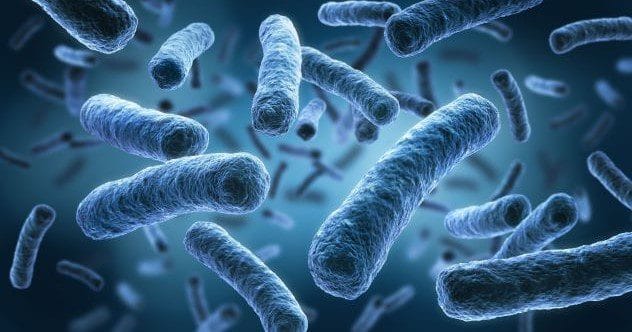How often do you really think about bacteria? These microscopic organisms make up most of life on Earth, and some scientists think they have unbelievable potential. These tiny, single-celled beings have a wide range of properties and uses—like pooping out gold or brewing their own alcohol. The microbial world is definitely surreal and fascinating. Here are ten of the oddest scientific discoveries and experiments involving these bite-sized bugs.
The Microbe That Poops out Gold
Cupriavidus metallidurans is a pretty strange organism. This tiny bacterium eats metal compounds and essentially poops out nuggets of gold.
This unusual ability comes from how C. metallidurans interacts with its environment. The soils where it lives are full of toxic minerals like copper and gold. Both metals are harmful in large amounts, but copper is essential for the microbe to survive. So, the bacterium takes in minerals from the soil and turns them into a less dangerous form.
If there’s too much gold, C. metallidurans uses an enzyme called CopA to avoid absorbing any toxic compounds. Professor Dietrich H. Nies explained, “This makes sure that fewer copper and gold compounds enter the cell.”
“The bacterium is poisoned less, and the enzyme that pumps out the copper can get rid of the extra copper without problems. Another result: the gold compounds that are hard to absorb turn into harmless gold nuggets only a few nanometres in size on the outside of the cell.”
100 Million-Year-Old Bacteria Dug Up from Ocean Floor
In July 2020, scientists announced that they had successfully retrieved bacteria from the Pacific Ocean seafloor that were thought to be over 100 million years old. These microbes are believed to be the oldest known organisms on Earth.
The record-breaking microbes include ten major groups of bacteria lying dormant over 200 feet (70 meters) beneath the seafloor. The international research vessel JOIDES Resolution dug up samples of clay from under the ocean bed where the bacteria were discovered.
After millions of years without nutrients, scientists were amazed to find that 99% of the microbes survived. The researchers incubated the organisms in a lab for 557 days, giving them nourishment in carbon and nitrogen sources like ammonia, acetates, and amino acids.
Spiteful Treatment Towards Lazy Colony Members
Odd as it may seem, there’s evidence that bacteria behave spitefully when their peers refuse to pull their weight. Jilted microbes have been known to deliberately harm themselves to get back at idle colony members.
As explained in a 2022 report in PLOS Computational Biology, colonies of bacteria survive by producing vital chemicals, like enzymes that break down foods into nutrients. How much they make is decided by a behavior pattern known as quorum-sensing. When microbes sense that they are surrounded by many of their peers, they produce fewer enzymes. But some freeloading bugs refuse to make any at all and, instead, try to feast on the work of others.
In this case, the scientists were surprised to learn that the other bacteria would also lower their chemical output. The result is that none of the microbes have enough to eat, and the entire colony can end up dying out. The researchers said that the microbes essentially commit “evolutionary suicide” to get rid of their idle peers.
“We didn’t expect to see this behavior, which you might even call ‘spiteful,’” explained Dr. Andrew Eckford, one of the study’s key authors. “But it shows that quorum sensing is a remarkably flexible tool for enforcing fairness.”
2,000 Generations of Bacteria Shed Light on Scientific Quandary
Evolution is a fascinating process. It’s the reason any of us are here today, instead of just single-celled organisms floating through the water. Yet, the process is still something of a mystery.
How much is determined by the diversity of the gene pool, or do random mutations play a leading role? It’s an age-old biological debate. Except now, scientists at Michigan State University might be one step closer to cracking the puzzle with the help of bacteria.
In a little under a year, the researchers bred over 2,000 generations of E. coli microbes. The bacteria were split into 72 populations, each with a different level of genetic diversity. The team tested their ability to compete for nutrients at different generations. Fifty generations in, the populations with greater diversity had a clear advantage. But by 500 generations, genetic mutations meant the differences between the groups “no longer mattered.” Some food for thought in the ongoing evolutionary debate.
Microbes in Gut Brew Their Own Alcohol
Scientists have long warned about the damage alcohol can cause to our internal organs. But in 2019, researchers in Beijing discovered a boozy microbe that lives in the gut, churning out alcohol in large amounts.
The drink-loving bug was first spotted in a patient with an unusual condition known as auto-brewery syndrome (ABS). People with ABS can become drunk after eating sugar. The ailment is often due to a build-up of yeast in the intestines, but in this case, scientists determined it was a “super-strain” of bacteria.
The microbe in question is called Klebsiella pneumoniae, and there’s evidence that it may be linked to fatty liver disease in people who don’t drink alcohol. Further research is needed, but as the scientists point out, understanding the cause of a medical condition opens up the chance of a treatment.
A Treatment for Gluten Intolerance or a Sign of Extraterrestrial Life
In October 2022, scientists announced that they had discovered some potentially revolutionary new strands of bacteria lurking in a cave hundreds of meters underground. So why are these subterranean bugs so exciting? Well, the researchers—based out of the USA, Algeria, and Sweden—think they could be used to treat gluten intolerance.
“We found strains that can produce antimicrobial substances, or that can break down gluten, a substance that can cause inflammatory reactions in the intestines of many people,” explained Natuschka Lee. “The bacteria were also found to be able to tolerate the extreme conditions found in our digestive system.”
But that’s not all. Finding bacteria in an underground cave is another sign that life can survive even in extreme conditions—dark, secluded, with little access to nutrients. Scientists say that this points to the possibility of microbial life lying undiscovered under the surface of Mars.
Eyelash-Sized Bacteria Is Largest Ever Discovered
Most bacteria are a fraction of a micrometer in size, but the largest ever discovered is actually visible to the naked eye. Found on mangrove leaves in a swamp in Guadeloupe, Thiomargarita magnifica defies what scientists believed to be the upper limit of microbe growth. Their models state that no microbe should be able to survive at that size, yet clearly, life finds a way.
“To put it into context, it would be like a human encountering another human as tall as Mount Everest,” said study co-author Jean-Marie Volland.
Aside from size, T. magnifica has various other unusual properties. Most bacteria have their DNA floating around inside, but this colossal strain stores its genetic material in compartments. It also contains three times as many genes, with hundreds of thousands of complex genome copies spread across the cell.
But the main thing that has left scientists scratching their heads is how bacteria could grow to such a relatively enormous size.
Mining for Rare Earth Elements
When it comes to rare earth elements, bacteria make better miners than humans. That’s what researchers at Penn State University say. They believe the protein lanmodulin could play a key role in resource extraction and green technology.
Rare earth elements are some of the most vital materials in the modern world. From smartphone parts to electric vehicles, even if you haven’t heard of metals like neodymium and dysprosium, we are all surrounded by them. Neodymium is particularly important because it can be added to iron to produce incredibly powerful magnets.
But these materials are currently proving difficult and expensive to extract. That’s where the microbes come in. Lanmodulin is part of a family of proteins produced by methylotroph bacteria. These proteins latch onto certain rare-earth metals and cling to them with phenomenal strength, 100 million times stronger than their attachment to other metals. The team at Penn State hopes to use this unprecedented bonding property to revolutionize clean rare earth production.
Scientists Teach Microbes to Play Tic-Tac-Toe
Thanks to researchers at the Spanish National Research Council, you can now play tic-tac-toe against genetically engineered bacteria.
The European team taught a strain of E. coli to play the game in a bizarre but potentially useful scientific first. They modified the bugs to behave like synapses in the brain, engineering “neural networks” out of the micro-sized organisms.
As synthetic biologist Alfonso Jaramillo told New Scientist, this odd experiment “means that the bacteria behave in the same way as an electronic component called a memristor that is being used to create computer chips that mimic how the synapses in a brain work.” Strange as it may seem, the group says it opens the door to many future uses, like making smart microbiomes or creating living materials.
Battling Back Against Cancer
Cancer is one of the most debilitating and lethal conditions on the planet today. The progress made in fighting against it is nothing short of incredible, and yet there is still such a long way to go.
But imagine a future where cancer can be simply “switched off.” In March 2023, immunologists at Columbia University had the wild idea to use bacteria as a potential treatment for cancer. Genetically engineered bugs worm their way into the tumor and trigger a response from the immune system by releasing chemokine proteins.
The immune system reacts differently to different chemokines. In a trial involving mice, the bacteria were modified to attract T-cells—which attack the tumor—and dendritic cells—which essentially help the T-cells better target cancer.
“My graduate student, Thomas [Savage], had the idea of potentially utilizing this platform to deliver chemokines,” explained author Dr. Nicholas Arpaia. “Through decades of research that’s allowed us to understand how an immune response develops, [we’re] developing therapeutics that specifically target each one of those discrete steps.”
From gold-pooping microbes to cancer-fighting bacteria, the world of microorganisms is full of surprises. These ten facts only scratch the surface of how weird and wonderful bacteria can be. It makes you wonder what other secrets these tiny organisms are hiding!
What’s the strangest thing you’ve ever heard about bacteria? Leave your comment below!










